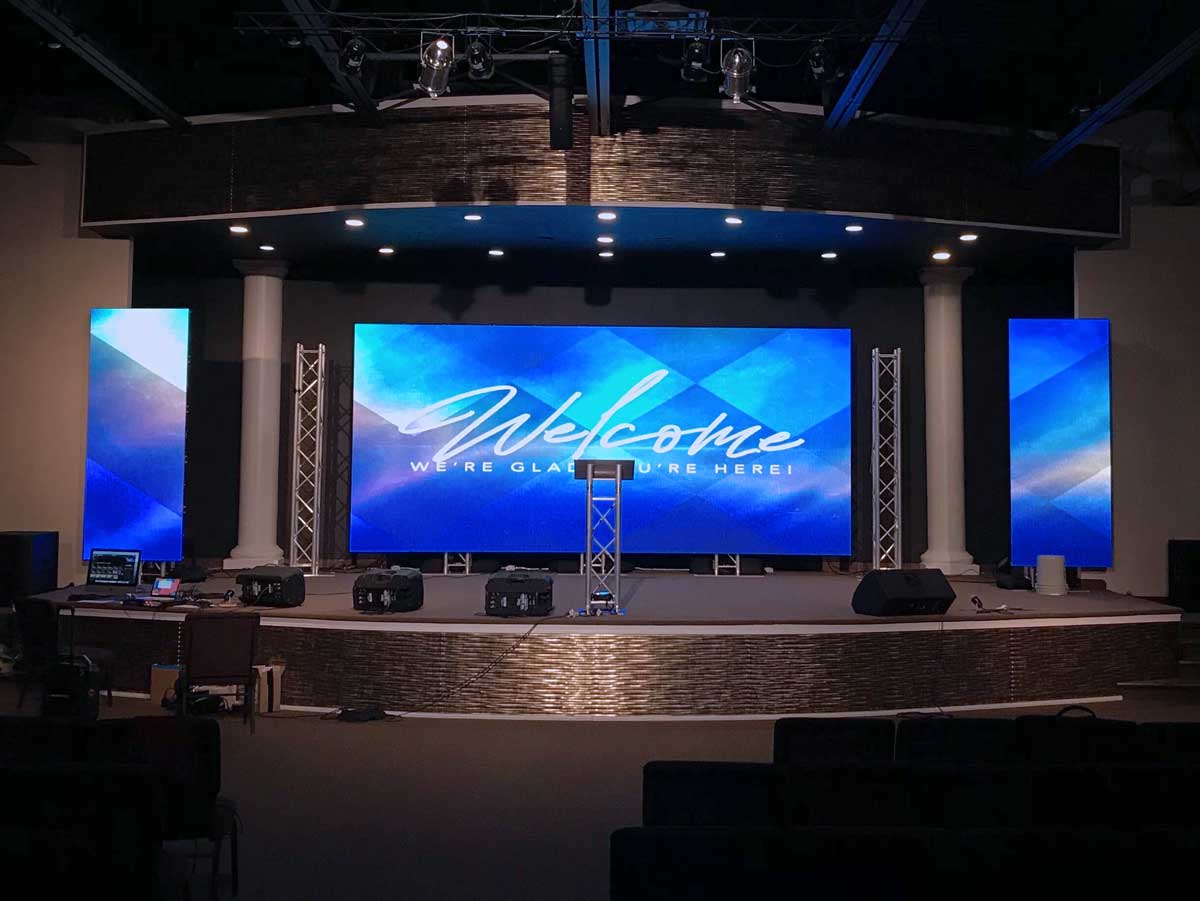In recent years, LED screens have become an essential part of live events, transforming stages into dynamic visual experiences. From concerts and theater productions to corporate events and festivals, LED screens enhance the impact of performances by providing high-quality visuals, dynamic effects, and engaging content. This blog explores why LED screens are perfect for stage use and how they can revolutionize live entertainment.
Why Use LED Screens for Stages?
Vivid Visuals and High Resolution
One of the main reasons LED screens are a top choice for stages is their ability to display crystal-clear images and videos. Whether it's a live video feed, pre-recorded visuals, or animated effects, LED screens offer vibrant colors and high resolution that can make any performance more immersive. High-pixel pitch LED screens (such as P2.5 or P3.91) ensure that even the smallest details are visible to the audience, regardless of the size of the venue.
Flexibility in Design
LED screens are not limited to traditional flat panels. They can be customized into curved, flexible, and even modular designs that adapt to any stage configuration. This flexibility allows for creative and unique stage setups, whether it's creating a massive backdrop or using multiple smaller screens for a multi-dimensional display. LED stage displays can wrap around pillars, form 3D shapes, or be suspended for a floating effect, offering limitless possibilities for stage designers.
Seamless Integration with Stage Lighting and Effects
LED screens can be integrated with stage lighting systems to create coordinated visual effects. When combined with moving lights, lasers, or pyrotechnics, they offer a dynamic interplay of light and visuals that sync with the performance’s mood or music. Many events utilize LED screens for interactive visual effects where the content reacts to sound, audience movement, or performers’ actions, enhancing audience engagement.
Versatility for Any Event
LED screens are perfect for any type of stage event, whether it's a concert, corporate conference, product launch, or theatrical performance. For concerts, they create an energetic atmosphere by displaying live footage, graphics, or music videos behind the performers. In theater, they serve as virtual sets, enabling quick scene changes and transporting audiences into different environments without the need for traditional props. During corporate events, they showcase presentations, logos, and messages clearly to a large audience, ensuring effective communication.
Bright and Clear Even in Daylight
One challenge for outdoor stage setups is ensuring that the visuals are visible in bright sunlight. LED screens, particularly outdoor-rated models, are equipped with high brightness levels (ranging from 5,000 to 10,000 nits), which means they remain sharp and clear even during daylight performances. This makes them ideal for outdoor festivals and concerts where natural lighting conditions could otherwise interfere with display visibility.
Durability and Easy Setup
LED screens are designed to withstand the rigors of live events. Their sturdy construction and weather-resistant features make them durable for outdoor and indoor performances. Additionally, modular LED panels are relatively easy to assemble, disassemble, and transport. This convenience reduces setup time and costs for event organizers.
Interactivity and Audience Engagement
In the era of digital interactivity, LED screens can take audience engagement to the next level. Through QR codes, voting, or social media walls, attendees can interact with the event in real-time, with their responses or social media posts displayed on the screen. This encourages participation, especially during concerts and live shows where audience involvement is key.

Choosing the Right LED Screen for Your Stage
Selecting the right LED screen for your stage depends on several factors, including event type, venue size, and budget. Here are a few key considerations:
- Pixel Pitch: For close viewing distances, choose a screen with a smaller pixel pitch, such as P2.5 or P3.91. For larger venues or outdoor stages, a higher pixel pitch (e.g., P5 or P6) may be more cost-effective while still delivering good visibility.
- Indoor vs. Outdoor: If your event is outdoors, opt for outdoor-rated LED screens that can handle different weather conditions and offer high brightness. For indoor events, indoor LED screens are designed with optimized resolution and contrast for enclosed environments.
- Curved or Flat Displays: Depending on your stage design, you may opt for curved LED screens for a more immersive experience, or stick to flat panels for a traditional yet effective visual setup.
Conclusion
Incorporating LED screens into stage setups has transformed the way we experience live performances. Their vivid visuals, flexibility, and ability to seamlessly integrate with lighting and effects make them a crucial part of modern stage design. Whether you're organizing a concert, corporate event, or theater production, LED screens provide a platform to elevate the visual storytelling and create memorable moments for your audience. By choosing the right type and configuration of LED screens, you can ensure that your stage will captivate, entertain, and leave a lasting impression.
Post time: Oct-15-2024



